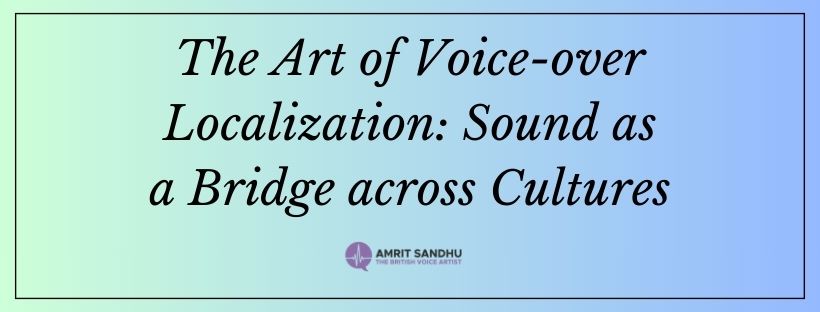The demand for successful voice-over localization has never been stronger in a world more interconnected by media and technology. Voice-over localization, often known as dubbing, is critical in translating content from one culture to another while ensuring that it resonates with its new audience. The original audio of a film, TV show, video game, or other media is replaced with a version in the target language, employing carefully picked voice actors and culturally suitable modifications. Let’s take a look at the intriguing world of voice-over localization and why it matters now more than ever.
Accessibility and Inclusivity
Voice-over localization helps make information more approachable for a wider audience. It allows non-native speakers of the original language to appreciate and comprehend the material completely. This inclusiveness is especially crucial in the globalized world of today, as varied audiences desire to interact with information from all over the world.
Adaptation to Culture
Voice-over localization involves more than just translating words; it also involves expressing cultural subtleties and feelings. Professional voice actors and translators collaborate to make sure that the dialogue and tone are appropriate for the local audience as well as correct. They modify jokes, phrases, and allusions to make the material seem familiar, thus overcoming cultural gaps. Viewers may not even realize the content was originally written in a foreign language after a successful localization.
Issues and Moral Considerations
Despite the many advantages of voice-over localization, there are some difficulties and moral issues to be aware of. Finding the ideal balance between adaptation and the maintenance of the integrity of the original content is a significant task. Purist fans may become enraged if the translation veers too far from the original, and the opposite is true if it sticks too closely.
In casting and cultural representation, ethical issues often come up. Making sure voice actors reflect the characters’ racial and cultural heritages can be a delicate matter. To avoid stereotypes or cultural appropriation, the pursuit of authenticity must be done with respect and sensitivity.
Storytelling’s Authenticity
Voice-over localization focuses on preserving the truthfulness of characters’ emotions as well as the spoken phrases. The characters sound just as authentic in the target language because of the professional voice actors who meticulously replicate the tone, pitch, and rhythm of the original performances. Beyond linguistic limitations, this genuineness enables viewers to engage with the story on a deeper level.
The Function of Technology
Advancements in technology have revolutionized the voice-over localization process. Voice modulation tools can alter pitch and tone, making it easier to match the original performance closely. Machine learning algorithms assist in lip synchronization, ensuring that the dubbing appears seamless and natural. Additionally, real-time translation and voice synthesis technologies are emerging, potentially reducing the time and cost of localization.
Language barriers are broken down by the art of voice-over localization, which also binds cultures from around the world. It enables the exchange of narratives, concepts, and forms of entertainment across national boundaries, promoting empathy and understanding among varied audiences. Voice-over localization will likely evolve to offer ever more immersive and inclusive experiences as technology develops. To ensure that the magic of localization continues to unite people from different cultural backgrounds through the force of sound, it is crucial to manage the difficulties and ethical issues carefully.




